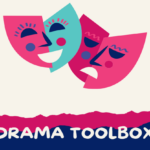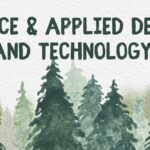The University of Victoria (UVIC) Instructors and Field Advisors have worked together to create pre-service teacher competencies that align with the British Columbia Teachers Council (BCTC) Professional Standards. The twelve UVIC competencies are organized into three categories to support the intellectual, social, and emotional growth of pre-service teachers as they transition into a professional environment.
Our Field Experience class EDCI 330 took some time to look at the twelve UVIC Teacher Competencies. Here a few of the key takeaways and understandings that I took away from the presentations:
Personal and Professional Preparation
Becoming a teacher means understanding how you think, interact with the world, and appreciate different opinions. This helps you to recognize the unique qualities of each student and respond to their individual needs and strengths. It’s a lifelong journey that involves learning about how people learn and work with others. Teachers must be flexible and ready to adjust to new situations and challenges.
(1.) Develop an awareness of your worldview and how this relates to others’ worldviews
As you start the Teacher Education Program, you bring with you, knowledge, skills, beliefs, and experiences that will shape your teaching. Your past experiences as a student and the teaching you’ve had will influence how you approach learning and teaching. Your worldview will also play a role in shaping your teacher identity. It’s important to be mindful and respectful of others’ worldviews as you enter the classroom. Your teacher identity will grow overtime and develop as you gain experience, continue learning, and reflect on your practice. More about my personal world view can be viewed in another post within my blog.
(2.) Develop a growth mindset demonstrated in collaboration with others
A growth mindset means believing that abilities and intelligence can improve with effort and learning. In a collaborative setting, this helps us embrace challenges, learn from feedback, and support each other’s growth. By working together and viewing setbacks as opportunities to improve, we create an environment where everyone can develop their skills. A healthy growth mindset will promote healthy learning.

“In a growth mindset, people believe that their most basic abilities can be developed through dedication and hard work—brains and talent are just the starting point. This view creates a love of learning and a resilience that is essential for great accomplishment”
Carol Dweck Ph.D.
(3.) Cultivate a culture of professionalism by demonstrating professional standards, including the Professional Standards for BC Educators
As pre-service teachers, we are expected to adhere to the same Code of Conduct as Teacher’s. We are in a professional program, and that requires us to maintain a professional demeanor at all times. This includes demonstrating respect, integrity, and responsibility in all of our interactions, both inside and outside the classroom. We must also uphold high standards of ethical behavior, ensuring that our actions reflect the values of the teaching profession. By following the Code of Conduct, we set an example for our future students and contribute to creating a positive and respectful learning environment.
(4.) Demonstrate an understanding of the complexity of teaching and learning
Teaching and learning evolve over time. Education is built on relationships and the environment within the system as a whole. Schools are complex, with factors like students, teachers, and the community constantly influencing each other. We are also shaped by a society that is always changing. Learning is unpredictable, and there is no clear, linear path. In our teacher education program, we use complexity theory to understand how learning grows in a connected and flexible way. It shows how systems change through cooperation and competition, with different parts working together to evolve.
Collaboration and Community Engagement
Today’s world is more complex and different voices and perspectives can help guide new teachers through various challenges. Education builds on past knowledge and creates strong, trusting relationships to support all learners. Learning to communicate respectfully is key to offering positive educational opportunities for every student.
(5.) Practise effective communication appropriate to the context and audience, enabling responsiveness to diversities of learners
Educators communicate daily with students, colleagues, parents, and administrators, while also helping students communicate effectively with each other. Good communication is key to building positive relationships. Learning how to speak, listen, and give feedback are all essential for effective communication. Throughout my time in the program, I have learned about my own communication style and how to apply effective communication techniques with peers, instructors, mentor teachers, advisors, and students.

6.) Practise respect for all learners from all cultures, including, specifically, Indigenous learners
Schools and classrooms are full of diverse learners with diverse needs. As educators it is essential to show respect for all learners. Diversity in the classroom will include cultural differences, race, ethnicity, religion, ability, sexual orientation, socio-economic status, experiences, and languages just to name a few. I plan to create a classroom that celebrates diversity and build a strong classroom community that is inclusive of all learners.
The Day You Begin by Jacqueline Woodson is a children book that follows a young girl who feels a little like an outside but soon feels that what makes her different is something to celebrate. It is just one example of the many books available to help students feel included and celebrated.
(7.) Practise working collaboratively and collegially as well as independently
This involves finding a balance between working independently and collaborating with peers or colleagues to ensure that the focus remains centered around supporting student learning. It is essential to keep an open mind while working with others to promote professional growth. This will help us transition from student teachers to fully-fledged professionals.
(8.) Develop positive and supportive connections with students and colleagues, building professional learning networks
Strong communication skills, developed in competency five, help build positive, lasting connections. Building strong relationships within your school community ensures that everyone’s needs are met. Relationships are the “key to success” in the classroom—this quote stood out to me during an interview with a retired teacher last year. Relationships with your students, parents, administrators, youth care workers, educational assistants, Indigenous educators, custodians, and everyone who helps a school run are all crucial. Each person is part of your school community, working together to create a thoughtful learning environment and experience for your students.
Exploring and Enhancing Pedagogy
Educators use a variety of sources and experiences to create positive learning environments for their students, ensuring that students develop a sense of belonging and purpose. As pre-service teachers, developing a variety of strategies will allow our students to flourish and grow.
(9.) Demonstrate a deep understanding of overarching disciplinary concepts
As we learn to become teachers, we need to understand the underlying concepts as well as the uniqueness of each discipline while helping learners make connections between and among these disciplines. Understanding the curriculum, First Peoples Principles of learning and the core competencies is essential in supporting the holistic development of students. As educators, we must strive to understand how each discipline contributes to the broader educational framework and how they intersect. The curriculum is more than just a collection of subjects; it is a guide to cultivating critical thinking, creativity, and an understanding of the world. Integrating the First Peoples Principles of Learning allows us to approach teaching in a way that is respectful, inclusive, and culturally relevant, creating an environment where all students can thrive. For me, creating an environment for my students to be their best is what it is all about!
(10.) Engage critically and creatively with ideas to be a change agent in society, especially with regard to equity and justice
Teachers must cultivate a growth mindset, understanding that learning and improvement are ongoing processes, not fixed outcomes. This mindset allows them to continuously adapt their teaching practices to better meet the evolving needs of all students. By embracing challenges and seeking feedback, teachers can refine their methods, ensuring that each student receives the support they need to thrive. Teachers must value and respect student diversity, recognizing that every learner brings unique strengths, perspectives, and experiences to the classroom. This appreciation for diversity helps create an inclusive environment where all students feel valued. Teachers also serve as change-makers, using their influence to shape the future of education and society. Beyond their academic role, they must be caring individuals who nurture emotional and social growth, fostering a sense of community and belonging. By embracing these responsibilities, teachers contribute not only to individual students’ success but also to the well-being and progress of society as a whole.
“A change agent, or agent of change, is someone who intentionally or indirectly causes or accelerates social, cultural, or behavioral change.”
(Nussbaum-Beach, 2010).
(11.) Implement pedagogically context-appropriate sound practices linking assessment for/as/of learning, planning for learning, instructional strategies and approaches to engage all students in relevant and personalized learning
An emphasis is on the connection between assessment and unit/lesson planning, while also highlighting the Universal Design for Learning (UDL) to address the needs of all students. By “starting with the end in mind,” teachers set clear goals and use assessments and strategies to guide students toward success, fostering growth and critical thinking.

(12.) Develop an understanding of how learners learn in order to cultivate effective learning environments
Throughout your journey to becoming a teacher and throughout your career, you will be expected to continually learn and expand your understanding of how people learn. Education is an ever-evolving profession, and as new research and best practices emerge, it’s crucial to stay updated and adaptable. Being a lifelong learner myself this is essential to keep in mind in order to become an effective educator.
Regular reflection on your teaching practices will help you identify strengths, areas for improvement, and new approaches that can enhance your students’ learning experiences. By embracing ongoing learning and reflection, you not only grow as a teacher but also model the value of lifelong learning to your students.
It’s important to keep an open mind to new ideas, strategies, and perspectives. I always say that ‘flexibility’ is my middle name when it comes to working with students. This openness allows me to better meet the diverse needs of my students and adjust my teaching to be more effective.
Professional Standards for BC Educators
The Professional Standards for BC Educators aim to promote high professional standards and ensure ethical practices that meet the needs of all students, including those from diverse backgrounds. The nine standards highlight the importance of respecting student diversity, continuing professional development, and building strong relationships with families and communities. They also highlight the importance of teachers in fostering inclusive and equitable learning environments, while supporting truth, reconciliation, and healing, particularly with First Nations, Inuit, and Métis communities. These standards guide teachers in their planning, teaching, assessment, and reflection, ensuring they make a positive impact on education and society.



Both the Professional Standards for BC Educators and the UVic Teacher Education Competencies emphasize the importance of ethical behavior, collaboration, and equitable teaching practices, as well as the need for reflective practice, continuous learning, and creating inclusive environments. Within the written standards of the BC Professional Standards, there seems to be a broader focus on Indigenous education. While the UVic Competencies reflect on indigenous practices, the concepts are centered more on developing practical teaching skills, personal reflection, and pedagogical practices of a new teacher. As I continue my journey toward becoming an educator, I must prioritize not only effective teaching but also ethical conduct, inclusivity, and collaboration. The emphasis on reflection and growth reminds me that learning as a teacher is ongoing, and I should always seek to learn and grow. I am encouraged to further my knowledge and understanding of indigenous education and reconciliation and integrate into my teachings. This will help me become an educator who is responsive to the diverse needs of my students, fostering an environment of respect, inclusivity, and continuous learning for both myself and my students. By embracing these standards, I can ensure I am equipped to make a positive impact on all learners, especially those from marginalized communities.








judi61
March 4, 2025 — 9:57 pm
Melissa,
Your research, curation and compilation of thoughts is a story in itself. How you use the story ‘The Day You Begin’ by Jacqueline Woodson, is so poignant. This could be the opening of the first chapter of your practicum or teaching career! Melissa, I appreciate how your thoughtful post helps to depict who you are and who you are becoming as a teacher to be.
Judi